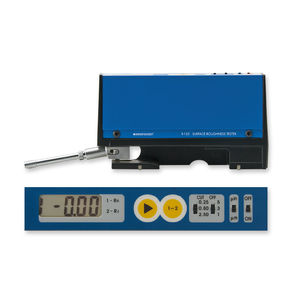
Surface roughness tester TR200, TR220portablewith LCD display

Add to favorites
Compare this product
Characteristics
- Type
- surface
- Configuration
- portable
- Options
- with LCD display
Description
During the measuring procedure the sensor moves linearly along the measured length. The probe moves accordingly to the profile on the surface. These movements are converted into electric signals which are amplified, filtered and converted into digital signals by an A/D converter. These signals are then refined in the main processor as Ra and Rz values (or Rq and Rt metrics) and displayed on the screen.
Features
Easy to operate menu
Display of 13 roughness parameters (TR200)
Display of 19 roughness parameters (TR220)
Wave filtering methods: RC , PC - RC , GAUSS , D-P
Cutoff wavelength: 0.25 mm / 0.8 mm / 2.5 mm
Visualization of the roughness and the material curve on the display-screen
Displays the probe positioning
DSP chip for data processing and calculation (for high data processing speed)
Various probes for measurements in boreholes , openings and grooves
RS-232 interface
Selectable languages: English, German, French, Italian, Spanish and Dutch
Application
Detects the roughness of hard surfaces as well as inside holes, openings and grooves
For example at: Labs, measuring rooms, workshops, engineering facilities, and many more
Catalogs
No catalogs are available for this product.
See all of SaluTron‘s catalogsRelated Searches
- Measuring machine
- Indentation hardness tester
- Digital hardness tester
- Thickness measuring machine
- Rockwell indentation hardness tester
- Brinell indentation hardness tester
- Vickers indentation hardness tester
- Automatic indentation hardness tester
- Portable indentation hardness tester
- Metal indentation hardness tester
- Coating thickness gauge
- Non-contact measuring machine
- Digital display thickness gauge
- Ultrasonic thickness measuring machine
- Handheld thickness gauge
- Aluminum indentation hardness tester
- Thickness measurement system
- Shore hardness tester
- Universal indentation hardness tester
- Metal thickness gauge
*Prices are pre-tax. They exclude delivery charges and customs duties and do not include additional charges for installation or activation options. Prices are indicative only and may vary by country, with changes to the cost of raw materials and exchange rates.


